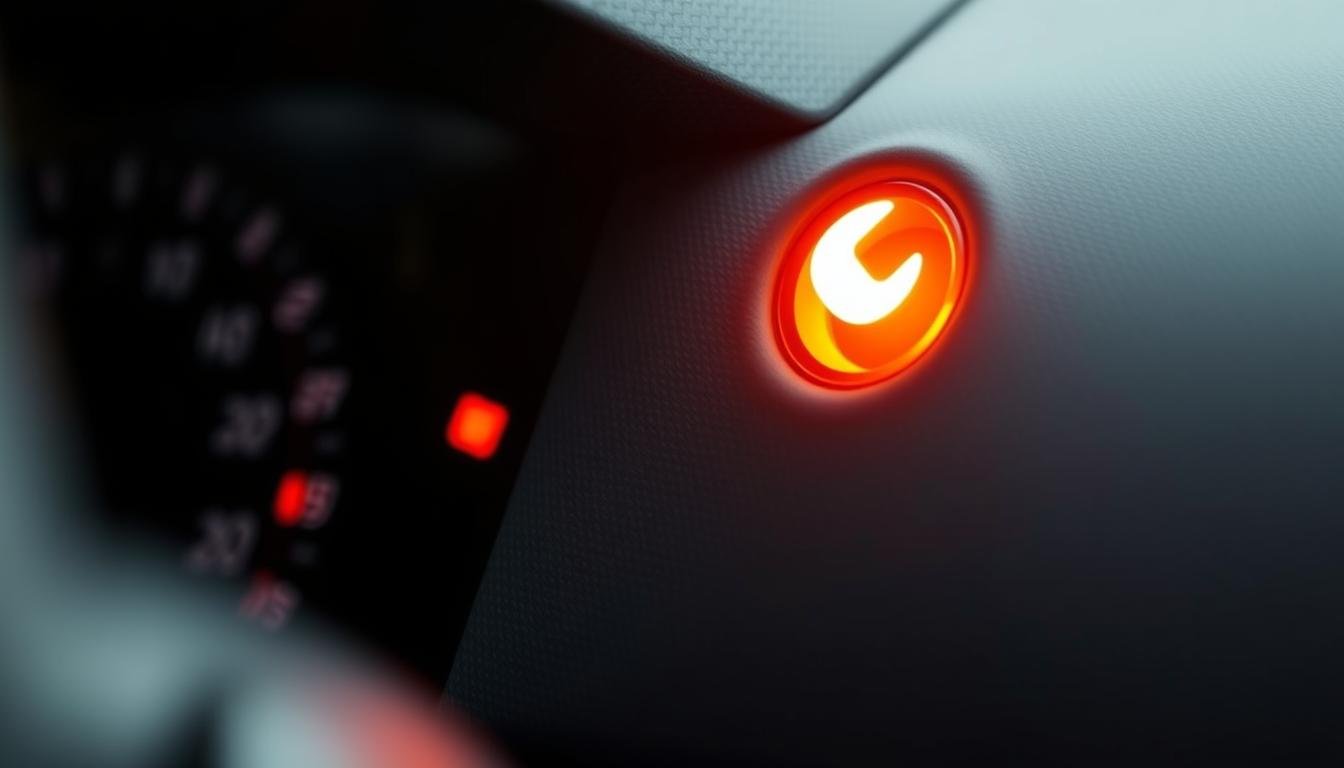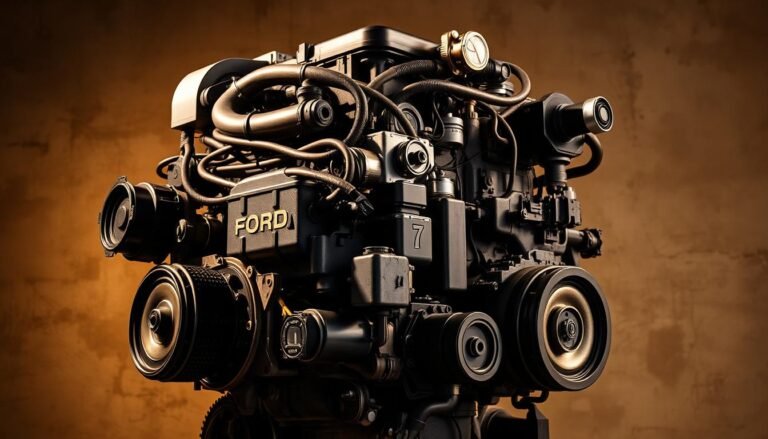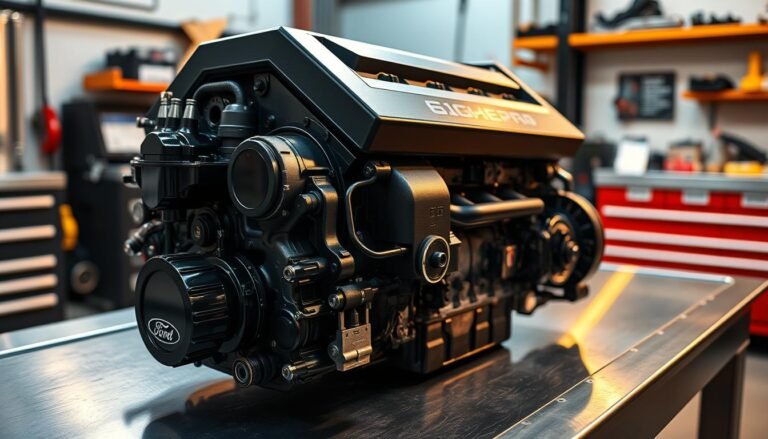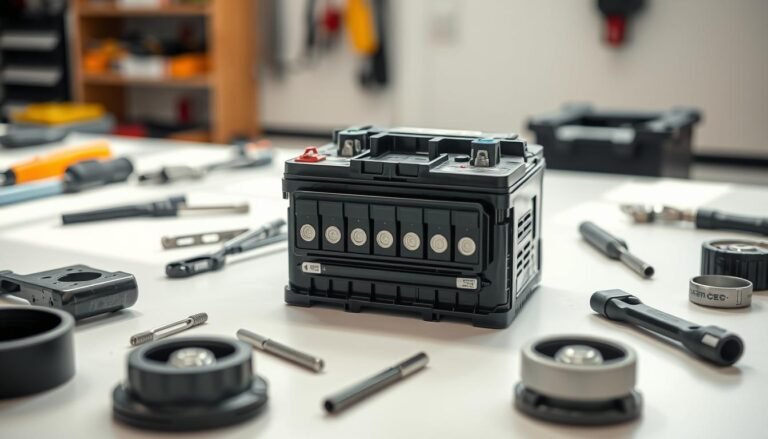What Does The Wrench Light Mean on A Ford? Exclusivel 9 Meaning & Action Steps
The wrench light on a Ford vehicle is an important sign. It tells you about possible issues with your car’s performance and safety.
Knowing about the wrench light is key for any driver. It helps you fix problems before they cause big and expensive repairs.
This light is a part of the car’s system that checks major parts of your vehicle. Seeing the wrench light usually means there’s something wrong.
It could be transmission issues, throttle problems, or electrical system errors. If you ignore this light, you might face bigger car troubles later.
To handle this, you need to know what steps to take. This includes checking your car and figuring out what’s wrong.
We’ll talk more about why the wrench light is important and what it means. You’ll learn what usually causes it to turn on.
Plus, you’ll get helpful advice on what to do if you see the wrench light. This includes how to check your car for problems yourself.
So, let’s understand more about the Ford wrench light and how it keeps your car running well and safely.
What is The Wrench Light on Ford Vehicles?
The Ford wrench light on the dashboard is a key alert in Ford cars. It points to possible troubles in the powertrain, including the transmission and throttle control.
It’s different from the check engine light, which deals with engine issues. The wrench light focuses on drivetrain and electronic controls problems.
Spotting the wrench light early can save your car’s performance. Ignoring it might lead to bigger issues.
It’s wise to check the light regularly. This way, you can fix any problems before they get worse.
What Does The Wrench Light Mean On A Ford?
The ford wrench light is critical. It warns you of issues in your vehicle’s systems. Knowing its meaning is key to keeping your car running well and safe on the road.
This light is serious. It points to problems that might impact how your vehicle drives and its safety.
Importance of The Wrench Light
The ford wrench light tells you about electronic and mechanical issues. Ignoring this light can lead to further damage and expensive fixes.
Paying attention to these warnings helps your vehicle run well and keeps driving safe.
Comparison with Other Warning Lights
The check engine light mainly focuses on engine and emissions issues. But the ford wrench light warns about a wider range of problems, like throttle control and transmission issues.
This shows why it’s crucial to act fast when you see the wrench light. It’s an early sign of potential mechanical failures that could get worse if ignored.
Common Causes For The Wrench Light to Illuminate
The Ford wrench light warns of different vehicle troubles. Knowing why this light comes on can greatly help in diagnosing problems with your Ford.
It’s critical to recognize these signs early. This way, you can fix them before they worsen, ensuring your drive remains smooth.
Transmission Issues
Transmission trouble can stem from low fluid, overheating, or failing parts. Not having enough fluid, or if it’s not working right, can make shifting gears hard.
It might even cause the transmission to fail. Fixing these issues quickly is key to avoiding more damage. Checking your Ford regularly helps catch these transmission issues early.
Throttle Control Problems
Problems with the electronic throttle can hurt your engine’s performance. Faults here may send wrong signals to the engine, turning on the wrench light.
This situation can cause your car to speed up or slow down unexpectedly. It needs fast attention.
A deep look into the system, including the throttle sensor, is part of diagnosing this issue.
Electrical System Errors
Electrical failures can also make the wrench light come on. Issues like broken wires, sensor errors, or weak battery can mess up your car’s systems.
Ignoring electrical issues can affect other parts of your vehicle. It’s important to deal with them quickly. Regular checks can spot and fix any electrical mistakes fast.
| Cause | Description | Impact |
|---|---|---|
| Transmission Issues | Low fluid, overheating, malfunctioning components | Shifting difficulties, potential failure |
| Throttle Control Problems | Faulty electronic throttle body | Erratic performance, reduced power |
| Electrical System Errors | Wiring faults, sensor issues, low voltage | Unexpected light activation, broader system impact |
How To Respond When The Wrench Light Comes On?
When the wrench light turns on in your Ford, it’s crucial to act quickly and smartly.
Staying calm and assessing the situation will hugely impact your response. The light being steady or flashing tells you what you should do next.
Initial Reactions
First, pause and think about what’s happening. A steady wrench light means you’ve got some time to figure things out.
It usually means the problem isn’t super urgent. Knowing what the wrench light means on a Ford helps you understand how quickly you need to act.
Driver Actions To Take
Start checking other dashboard lights that might be on. They can tell you more about what’s wrong with your car. If the wrench light is blinking, find a safe spot to pull over.
Driving more can make the problem worse. It’s important to get your car checked by a professional in this case.
Ignoring this light can cause big problems later. Whether the light is steady or blinking, learning how to reset the wrench light on a Ford might help for a short time.
But it’s always better to fix the real issue first. Doing so keeps your car running well and safe.
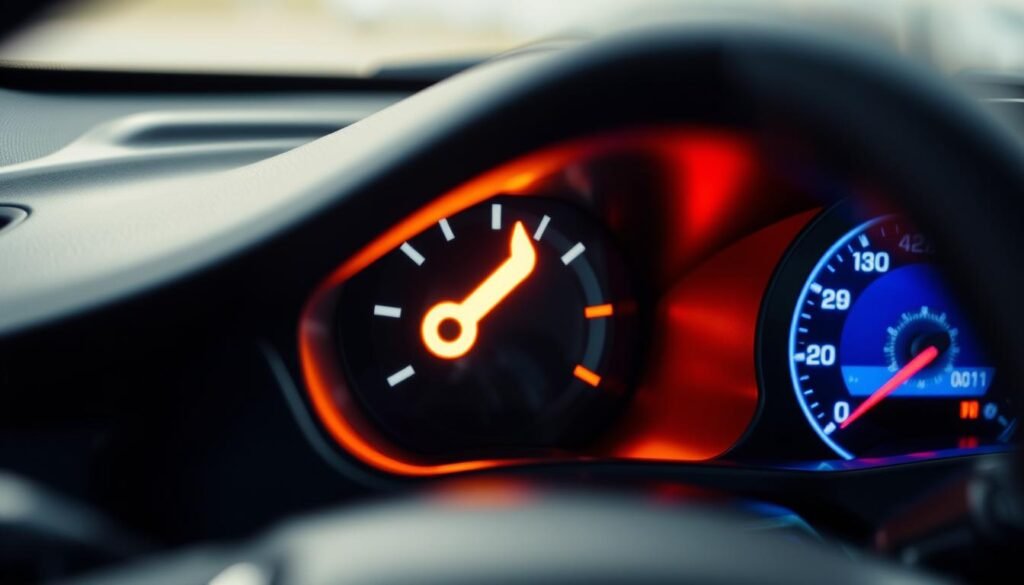
Diagnosing The Wrench Light Issue
Finding out why the wrench light came on is key for your Ford to work right. Using diagnostic tools and getting professional help are important steps.
This way, you avoid dangerous situations and expensive fixes.
Utilizing Diagnostic Tools
An OBD-II scanner is a big help for checking your car. It reads error codes that tell you why the wrench light is on.
Using these codes helps figure out the problem without guessing. Here is how you use the scanner:
- Connect the OBD-II scanner to the vehicle’s diagnostic port.
- Turn on the ignition to power the scanner.
- Follow the instructions on the scanner to retrieve fault codes.
- Analyze the codes to understand the potential issues affecting your vehicle.
When To Consult A Professional?
If you’re stuck after trying to figure it out yourself, or think the problem is big, see a mechanic.
A pro mechanic can find tough problems thanks to experience and tools. Look for these signs that it’s time for expert help:
- You cannot interpret the OBD-II codes.
- The wrench light stays on after you try fixing it.
- Your car makes strange sounds or doesn’t run right.
- Lots of warning lights come on at once.
Steps To Troubleshoot The Wrench Light Warning
When your Ford’s wrench light comes on, it’s important to act fast. This guide will show you how to troubleshoot the issue yourself. You’ll learn the basics to figure out what’s wrong.
Self-Diagnostics You Can Perform
First, pay attention to how your car drives. Look for new sounds or if it’s hard to change gears. Use tools like an OBD-II scanner to find error codes. These codes help pinpoint the issue.
Checking Fluid Levels
Checking your car’s fluid levels is a big part of solving this problem. Make sure the transmission fluid and engine oil are full and clean. If they’re not, they might be why the light is on.
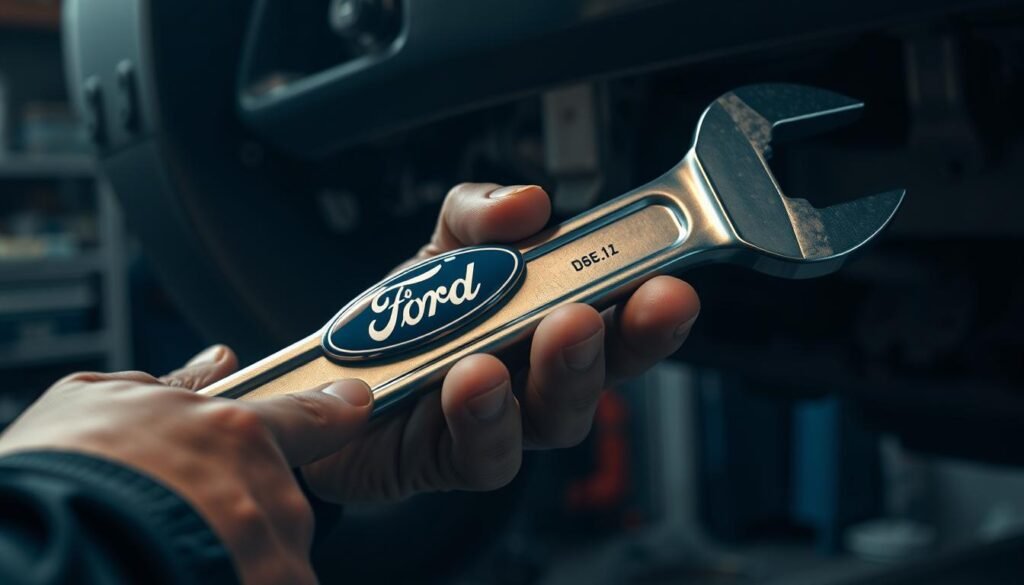
| Fluid Type | Recommended Level | Signs of Issues |
|---|---|---|
| Transmission Fluid | Check manufacturer guidelines | Burnt smell, dark color |
| Engine Oil | Check dipstick reading | Low reading, frothy appearance |
By doing these checks, you can learn a lot about why the wrench light is on. This may help you avoid bigger issues later.
The Role of Regular Maintenance in Preventing Wrench Light Activation
Keeping your vehicle in check is key to stopping problems shown by the ford wrench light indicator.
By doing regular maintenance, you can spot issues early on. This way, your Ford stays in top shape and you’ll see the wrench light less often.
Scheduled Services
It’s important to follow your car’s maintenance plan. This should include:
- Oil changes
- Routine inspections
- Fluid checks
Doing these things helps stop problems that could trigger the ford wrench light meaning. If you skip these, you might face bigger issues later.
Key Maintenance Tasks
Adding certain maintenance tasks can really reduce the risk of seeing the ford wrench light indicator. You should concentrate on:
- Changing engine oil and filters
- Rotating tires regularly
- Inspecting brake systems
- Ensuring batteries, sensors, and electronics function properly
These actions ensure your car performs well. They also help you grasp what the ford wrench light meaning is all about.
What To Do if The Wrench Light Resets Itself?
Seeing the ford wrench light turn off by itself can be reassuring. Ford cars can turn off this light if a problem fixes itself.
But, don’t be too quick to think everything’s okay. You might still need to check your car thoroughly to find any hidden problems.
Learning Automatic Resets
There are many reasons why a car might reset its warning light. Maybe the car’s computer found a problem and fixed it, turning the light off.
But, it’s important to keep an eye out. Just because the light went off once doesn’t mean your car is fine.
Always double-check to make sure no other problems are lurking, as they can get worse if you ignore them.
Significance of Persistent Warning Lights
If the wrench light comes back on, take it seriously. A light that won’t stay off means your car has an ongoing issue that needs quick action.
Fixing it fast can stop bigger, more expensive problems later. Don’t overlook these warnings. Ignoring them could make things much worse and costlier to fix.
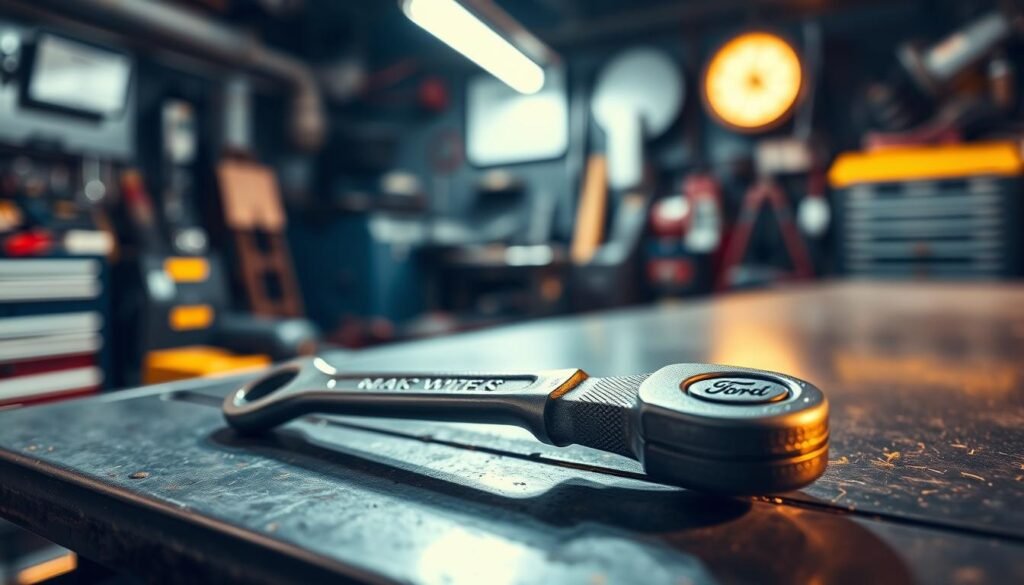
Common Misconceptions About The Wrench Light
The ford wrench light diagnosis often confuses car owners. Many think the light only shows serious mechanical problems.
But, it can also mean your car needs minor maintenance. Knowing this helps you take better care of your car.
Busting Myths
A common myth is that the wrench light points to only big troubles. While it’s important to be concerned, it doesn’t always mean something serious is wrong.
Instead, it could be something simple, like:
- Low oil levels
- Battery voltage problems
- Minor electrical faults
This shows the wrench light can indicate different things. This understanding helps you avoid unnecessary worry.
Compromise Temporary Glitches
Sometimes, system errors can make the wrench light come on for no real reason. Even so, if it keeps happening, it’s best not to ignore it.
It’s wise to check your car thoroughly or see a professional to keep it in top shape.
Real-Life Experiences with The Wrench Light
Many Ford owners have shared stories about the wrench light on their dashboards. They offer insights into why this warning light appears, showing why it’s vital to act fast.
Sometimes, the problem is as simple as needing more fuel. But at other times, it might mean needing big repairs, like getting a new throttle body.
These stories help others figure out what to do when they see the wrench light.
Owner Testimonials
Several owners share how seeing the wrench light made them quickly check their car. They faced common problems like:
- Running low on fuel, which the light warns you about.
- Issues with throttle control that need quick action for safety.
- Electrical troubles that only show up with the wrench light.
Lessons Learned
These real stories from Ford owners highlight how crucial regular car checks are. From these experiences, we learn lessons like:
- Watching your dashboard closely can help avoid big problems.
- Dealing with warning lights right away can save both time and money.
- Sharing what you went through can help others solve their wrench light issues.
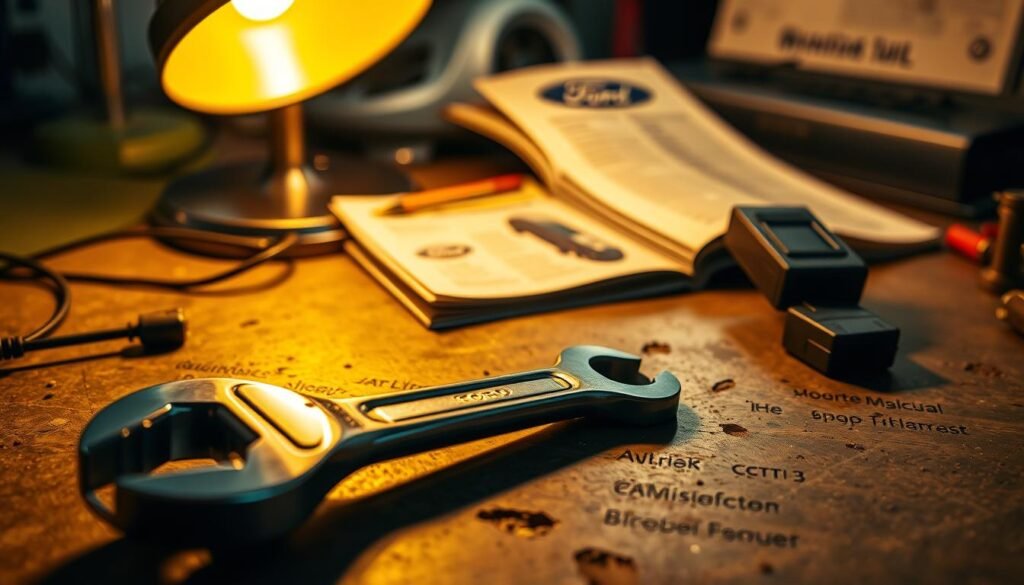
Professional Help For Wrench Light Issues
When your Ford shows the wrench light, it’s best to seek professional help. Look for mechanics skilled in Ford cars for an accurate fix.
You want someone who is reliable and knows these issues well.
Finding Qualified Mechanics
Search for mechanics who are certified and have lots of experience. Read reviews to learn about their standing in the community.
A skilled mechanic is key. They should know your car’s system and have the right tools. This helps them figure out why the wrench light is on and fix it correctly.
Preparing For Your Visit
Before you see the mechanic, write down everything about the wrench light’s issues.
Include any tests you’ve tried and recent car history. Sharing detailed info helps the mechanic solve the problem quicker.
Conclusion
The wrench light on a Ford is more than a simple warning. It signals critical issues that affect your car’s safety and performance.
Knowing what this light means helps you act quickly when it comes on. This way, you can avoid big damage and expensive repairs.
Also, responding quickly to the wrench light makes your car more reliable. Regular maintenance helps stop this light from turning on.
It keeps your car running well. By learning necessary maintenance and fixing problems fast, your car will stay in top shape and last longer.
In short, understanding the wrench light on a Ford protects your driving experience and your investment.
Regular checks and paying attention to warning lights are key. These steps make sure your Ford stays a reliable friend on the road.
FAQs
Q: What does the wrench light mean on my Ford vehicle?
A: The wrench light shows there might be issues with your vehicle’s powertrain. This includes transmission problems or throttle issues. It means you should get it checked or maintained soon.
Q: How can I reset the wrench light on my Ford?
A: Some Fords reset the wrench light automatically after fixing the problem. Yet, it’s key to use an OBD-II scanner or get a professional check to ensure the issue is fixed.
Q: Is the wrench light the same as the check engine light?
A: No, they’re different. The wrench light alerts you to powertrain and mechanical issues. The check engine light deals with engine and emissions.
Q: What should I do if the wrench light starts flashing?
A: If the wrench light flashes, stop driving safely and seek professional help. A flashing light warns of a significant issue affecting your vehicle’s drivability.
Q: Can low fluid levels trigger the wrench light?
A: Yes, if your transmission or oil fluid is low, the wrench light may turn on. It signals that you might need to check levels or add more fluid.
Q: How often should I perform maintenance to prevent the wrench light from coming on?
A: Follow your car’s maintenance schedule for regular oil changes and check-ups. This can help stop the wrench light from coming on.
Q: What kind of diagnostic tools can I use for the wrench light?
A: An OBD-II scanner is a good tool for this. It reads fault codes that help figure out what the wrench light is signaling.
Q: How can I differentiate between minor and major issues based on the wrench light?
A: If the wrench light stays on or you notice other car issues, get a professional to look at it. They can tell you if it’s a big or small problem.

